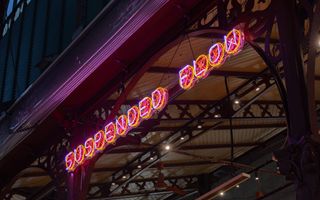(Finance) – Le renewable energies are currently the only viable way to ease the world’s dependence on fossil fuels: according to the 2023 report of the International Energy Agency (IEA), renewables are increased by 50% compared to 2022. With solar photovoltaic alone, almost 510 gigawatts (GW) have been reached, a quantity that represents three-quarters of the entire global renewable energy sector.
The goal is Net Zero, “zero net emissions” (of greenhouse gases), to contain the global climate warmingan objective in line with the target ofParis Agreementwhich aims to limit global warming to +1.5°C by the end of the century.
Behind the impact of renewable energy on our economic sector and on the health of the planet, there is an important commitment also from the point of view of scientific research: new avenues are constantly being explored and one of these could be the one that puts attention there production of electricity from the heat developed by the human body.
A not so far-fetched idea: it was 2018 when the American University of Buffalo, in collaboration with the Chinese Academy of Sciences, proposed the idea of a wearable chargerwhich exploited the energy produced by the human body: in 2022 the School of Mechanical, Electrical and Manufacturing Engineering of the University of Moratuwa, in Sri Lanka, has instead developed a new production technique to create clothes that they develop energy starting from the movement of the wearer. According to scientists’ estimates, an adult continuously releases thermal energy that corresponds to a 100 watt light bulb: in one day the energy produced is about three kilowatt hoursan amount that could run an LCD television for 30 hours.
There is this idea behind the new artistic work of Vincenzo Marseillean emerging artist who has already inaugurated the Paris Art Fair on the Champs Élysées, the Rome Arte in Nuvola fair and has given new artistic form with his installations to Giovanni Boccaccio’s birthplace in Certaldo: the union of art, sustainability and technology is realized in “Suspended Flow”the site-specific installation signed by the artist, curated by Davide Sarchioni and produced by Mercato Centrale Firenze, located in Giuseppe Mengoni’s historic structure from 1874.
The Marseille work is an aerial installation composed of several neon light sculptures, made of Murano blown glass, suspended in the upper part of the architecture, almost floating in space, following a precise perspective order like constellations of an imaginary celestial sphere . The name, Suspended Flow, refers to the constant flow of data transmitted upwards, which is transformed into luminous energy, a sort of co-creation between the artist and the public. The entire light system is powered by the energy created by visitors, which animates and illuminates the space with different colours. Through an App, the influx of the public and their interaction with the Market more or less consciously favors the variation of the luminous intensity of the neon lights, generating an ever new and constantly evolving atmosphere. Thus, Suspended Flow invites us to be together, to aggregate and to cooperate to generate positive, inclusive and truly sustainable energy, which is powered by energy coming from 100% renewable sources.
A way to highlight new technological outlets linked to energy production, but also to show how public events can become autonomous from an energy point of view, simply by “exploiting” the visitors who animate them.
